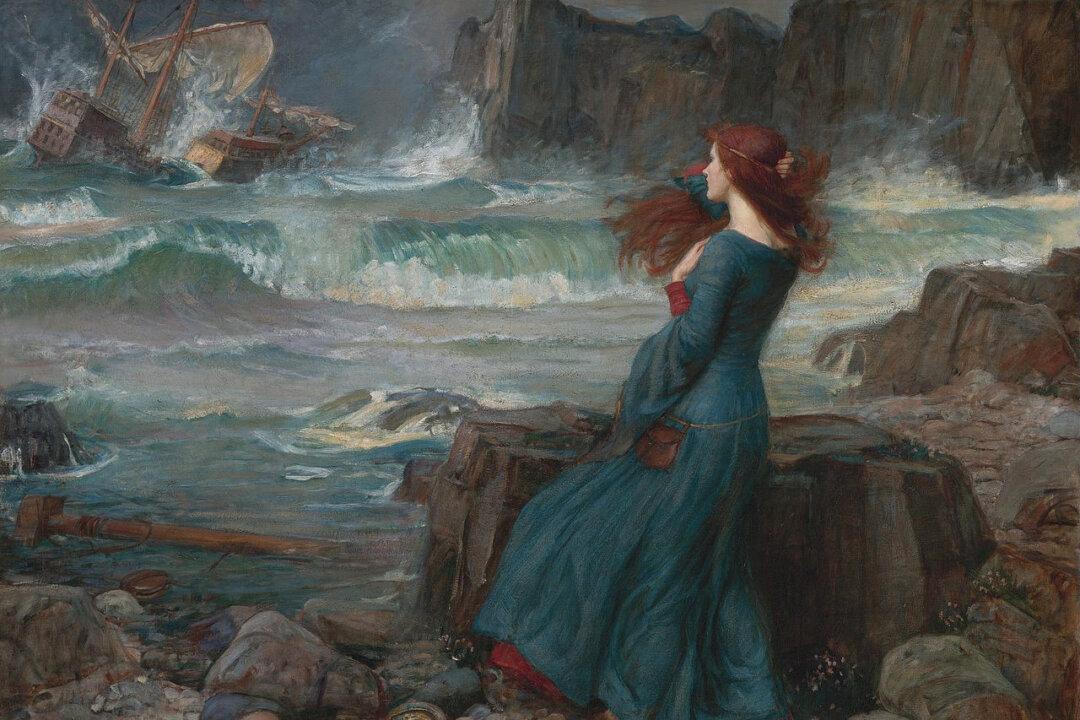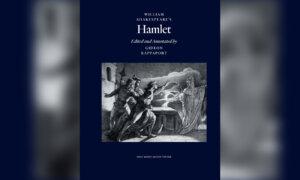The intersection of visual art and literature provides fertile ground for creativity to flourish. One of the great treasures of Western civilization is the ongoing “conversation” that occurs through the centuries between poets, painters, and philosophers, all responding to one another’s ideas and artistic expressions. Every literary-inspired artwork comments on the literature that produced it. It interprets the author’s vision, adding depth to the writer’s work, while becoming a new vision, a new work of art in its own right.
Exploring this artistic conversation is sheer delight for literary critics and art scholars alike. In a synergistic reciprocal relationship, the art sheds light on the poetry while the poetry sheds light on the art.
‘Landscape With the Fall of Icarus’ by Pieter Bruegel (1560)
Like the trunk of a tree, this painting by Dutch master Pieter Bruegel grows from a literary tradition and forms the basis for later literary offshoots. In it, Bruegel depicted a scene from the Greek myth of Icarus and Daedalus.
In the myth, King Minos of Crete recruits the inventor Daedalus to craft an intricate labyrinth that’s impossible to escape from as a prison for the Minotaur monster. But after Daedalus completes his task, King Minos doesn’t allow him and his son, Icarus, to return home. Minos locks them in a tower.
The resourceful Daedalus creates two pairs of wings made of feathers and wax, so that he and his son can escape. But Icarus, ignoring his father’s warnings flies too close to the sun. The wax melts, the feathers fall away, and Icarus plunges to his death in the ocean below.
In depicting the moment of Icarus’s demise, Bruegel made an interesting choice: He placed Icarus and his impact with the ocean in the background, so small that a passerby wouldn’t even notice the two small legs disappearing into the deep green sea. Bruegel painting focuses on a large, magnificent ship, headed out to sea and on a plowman working a field in the foreground.
About suffering they were never wrong, The Old Masters: how well they understood Its human position; how it takes place While someone else is eating or opening a window or just walking dully along
Thus great art begets great art in an unceasing cycle.‘Andromache Mourning Hector’ by Jacques-Louis David (1783)
Readers of the “Iliad” will be familiar with one of its most magnificent and moving features, the relationship between the Trojan hero Hector and his loving wife, Andromache. Hector is the prince of Troy who holds together the city’s defenses against the besieging Greeks. His leadership, courage, and combat skill make him the keystone that maintains the city’s safety. He’s also an attentive father and husband.One of the poem’s most touching scenes occurs when Hector reenters the city after battle to visit his Andromache and their son, Astyanax. He tenderly plays with the boy and comforts his wife, who begs him not to return to war. Despite her protests, Hector returns to battle, largely in order to keep her safe.
In the end, however, he fails, brought down to the dust by the mighty hand of Achilles. David’s painting portrays Andromache and Astyanax grieving over Hector’s body.
David depicted the scene with such technical skill and dramatic pathos that it earned him election to the Académie Royale in 1784.

‘The Banquet Scene in Shakespeare’s “Macbeth”’ by Daniel Maclise (1840)
This powerful painting by Daniel Maclise snatches viewers’ breath away with its lifelike use of light and shadow, haunting atmosphere, and dramatic poses.It depicts the moment in Shakespeare’s “Macbeth” when the titular character sees the ghost of his murder victim and former friend, Banquo. The victim sits in Macbeth’s own throne at a feast the king is holding for his thanes. Banquo suffered collateral damage during Macbeth’s nightmarish descent into jealousy, paranoia, and cruelty. Macbeth reacts with shock and horror to the spectral vision. His wife, Lady Macbeth, quickly tries to explain away his odd behavior to the confused guests, who cannot see the spirit.

From the chandelier’s wild, streaming flames to the sweep of Lady Macbeth’s arm and the recoiling figure of Macbeth (contrasted with the still silhouette of the ghost’s back), the painting possesses a powerful, slightly unhinged energy. It reflects Macbeth’s descent into near-madness as he begins to lose control of his situation.
‘Ophelia’ by Sir John Everett Millais (1851)
Shakespeare’s work is a favorite with artists, and here we have another scene from a Shakespeare tragedy, this time painted by Sir John Everett Millais. Millais poignantly depicts Ophelia’s final moments from “Hamlet.”
Millais paints Ophelia just before she goes under the water, her lips still parted in song, her clothes and hair billowing out around her in the water, a few flowers limp in her hand. The rich colors and odd, statuesque pose of the half-submerged woman arrest the eye.
‘The Lady of Shalott’ by John William Waterhouse (1888)
In this painting, John William Waterhouse illustrated a scene from the work of his contemporary, the great poet Alfred, Lord Tennyson. Tennyson was greatly inspired by Arthurian legends, another example of art engendering more art. He wrote a number of retellings of them in verse, including the book-length collection, “Idylls of the King.”A separate, stand-alone poem, “The Lady of Shalott,” recounts the story of a lady who lives in a tower by a river that flows to Camelot. She’s the victim of a curse that forbids her from looking directly at the world. If she does, she will die. She can see outside only by looking at a mirror. She weaves what she sees into tapestries. Ultimately, however, the Lady of Shalott chooses to break the rule. She looks directly at Camelot, thus assuring her own death. Leaving her tower, she finds a boat and floats down the river to Camelot. She dies before she arrives.

One of Waterhouse’s most famous paintings, “The Lady of Shalott” shows the heroine in her boat, heading down the river, approaching her death. It’s remarkable for its combination of photo-like realism blended with a mystical and fantastical air. With dense, rich details and colors, Waterhouse brought the moment vividly to life–just moments before the onset of death.
Viewers can read the lady’s knowledge of her coming death in her face, which is profoundly mournful, fatigued, fragile, yet still peaceful. She sits straight up, one arm slightly outstretched, her gaze fixed ahead as though determined to take in as much of the world as she can before it slips from her grasp.
Much like the Lady of Shalott who sees the world in a mirror, the great artists featured in this list saw the world reflected in the myths, poems, and stories they sought to illustrate. Their artwork becomes a kind of double-reflection of reality as the literature and art coincide to bring truth and beauty into greater focus, like lenses stacked on top of each other in a telescope.








